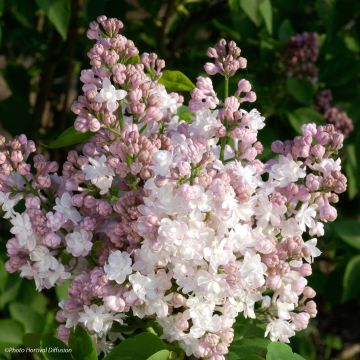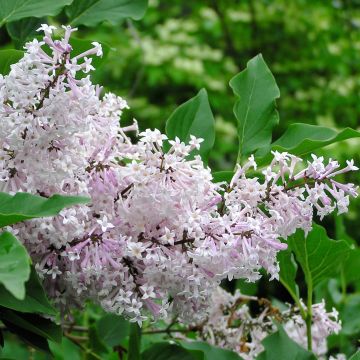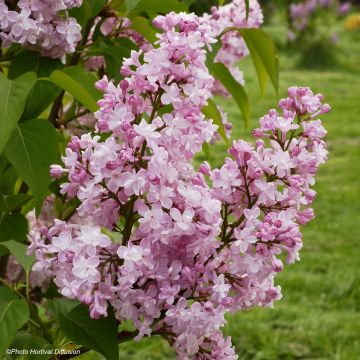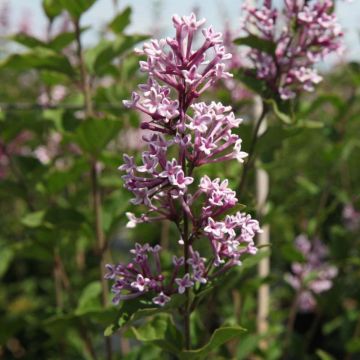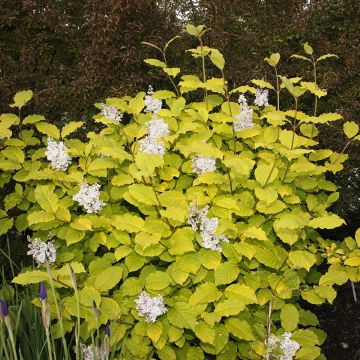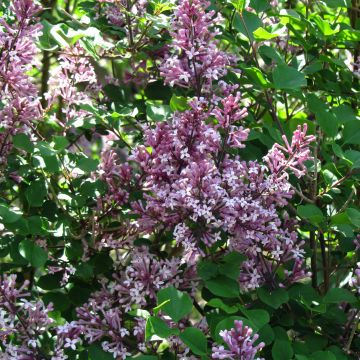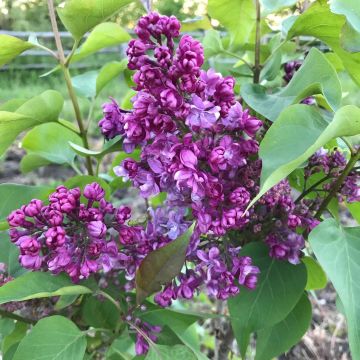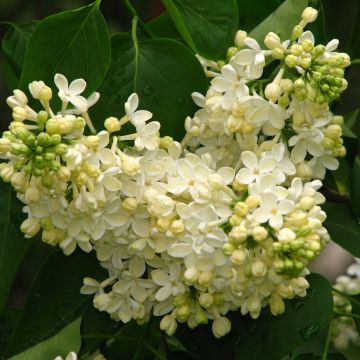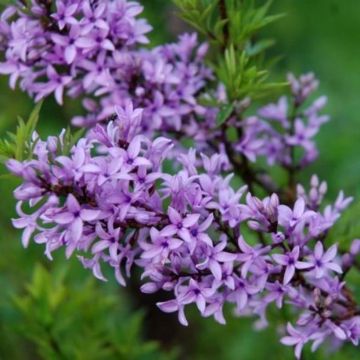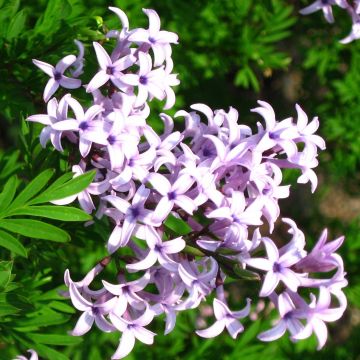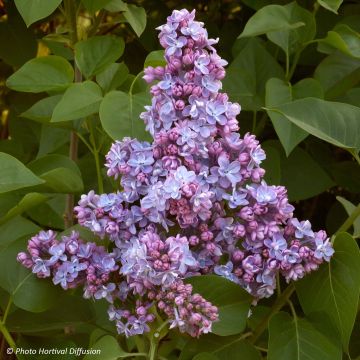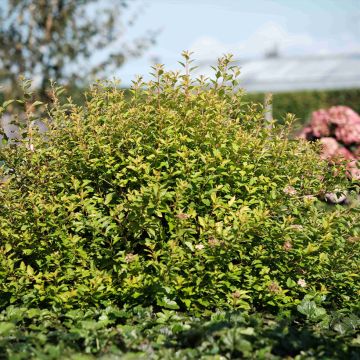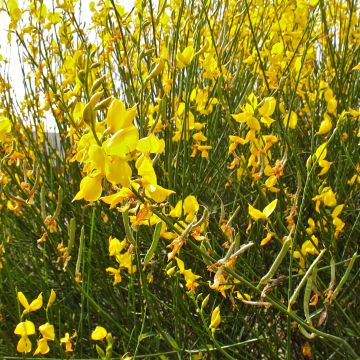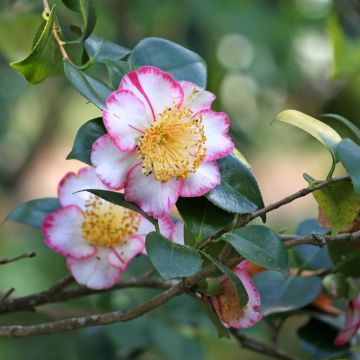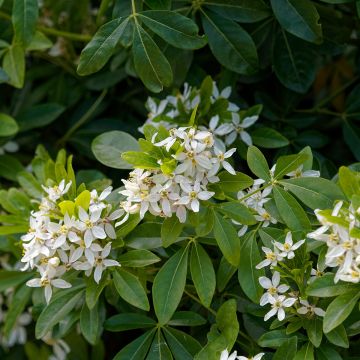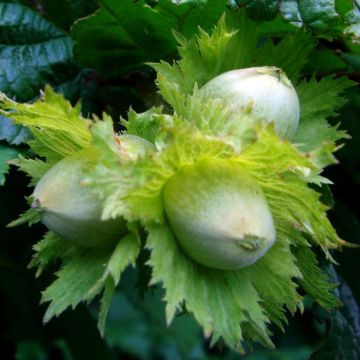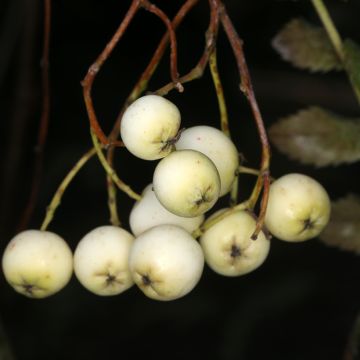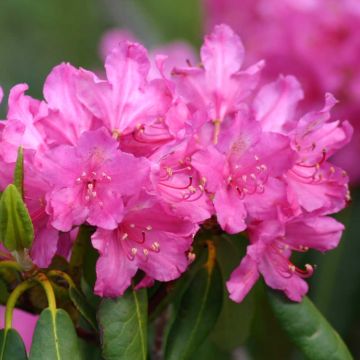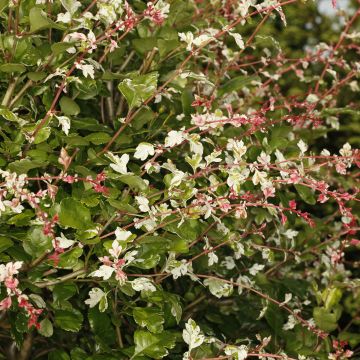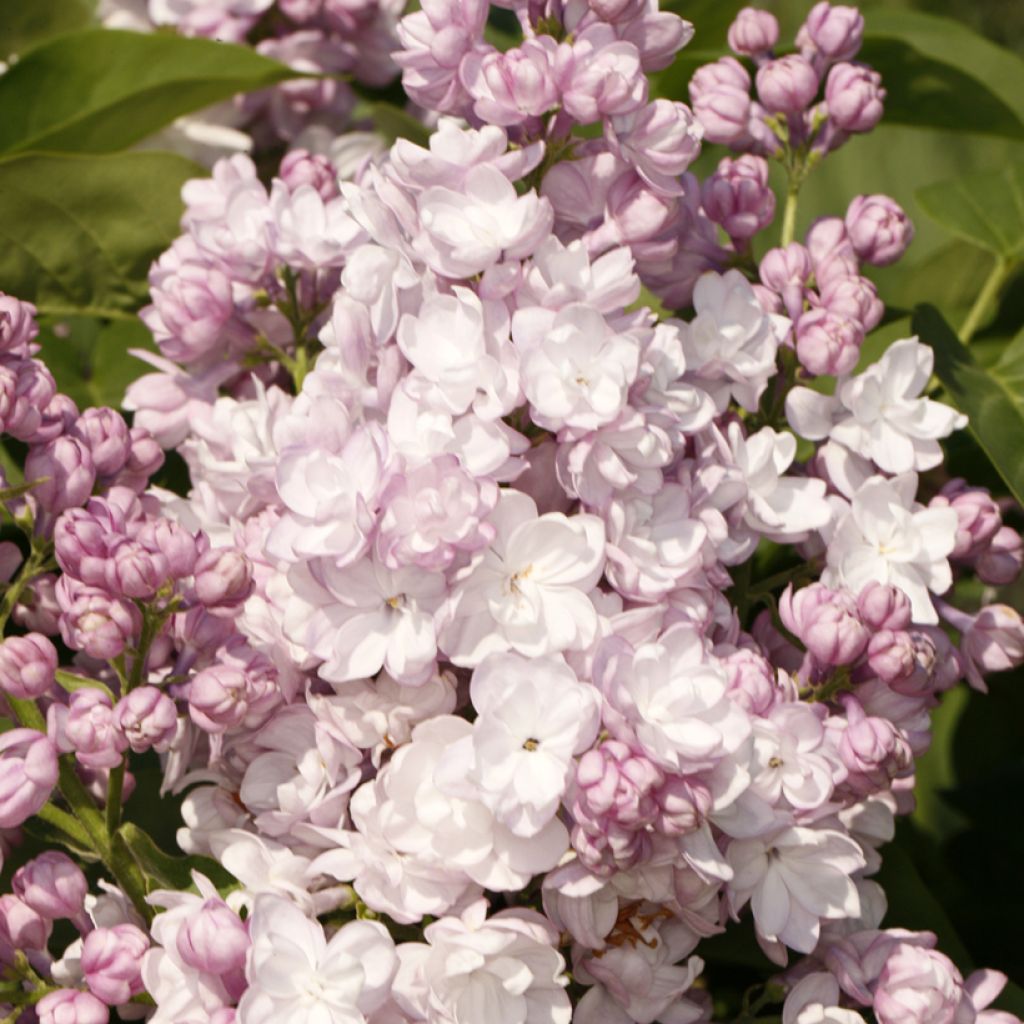

Syringa vulgaris Rose de Moscou - Common lilac
Syringa vulgaris Rose de Moscou - Common lilac
Syringa vulgaris 'Minkarl' ROSE DE MOSCOU®
Common lilac, Lilac
Why not try an alternative variety in stock?
View all →This plant carries a 24 months recovery warranty
More information
We guarantee the quality of our plants for a full growing cycle, and will replace at our expense any plant that fails to recover under normal climatic and planting conditions.
From €5.90 for pickup delivery and €6.90 for home delivery
Express home delivery from €8.90.
Does this plant fit my garden?
Set up your Plantfit profile →
Description
The Moscow Pink Lilac®, known as Syringa vulgaris 'Minkarl' in Latin, is a magnificent ornamental bush prized for its double flowering in a pinkish-white colour and its subtle fragrance. Its vigour allows it to be planted in a flowering hedge or a rustic shrub bed, but its moderate growth also makes it suitable for small gardens.
The 'Rose de Moscou' Lilac belongs to the Oleaceae family. It is a horticultural creation from the Mc Kay Nurseries in the United States. This cultivar is a mutation of the famous Syringa vulgaris 'Belle De Moscou'.
The wild species Syringa vulgaris, commonly known as common lilac or European lilac, is native to Southeast Europe and Western Asia, specifically the Balkan Peninsula. It arrived in Western Europe at the end of the Renaissance. In the wild, this robust plant with highly fragrant blue-violet flowers colonises rocky hills and withstands cold winters.
Syringa vulgaris 'Rose de Moscou' is a fairly fast-growing shrub that reaches approximately 2.50m in height and width in 10-12 years. It has a bushy and dense habit. Its leaves are opposite on the branches, simple, heart-shaped, and 5 to 12 cm long. They form a dark green foliage that creates a beautiful backdrop for its pastel flowers. This deciduous foliage turns yellow in autumn before falling. The flowering period in April-May, consists of spectacular clusters of double white flowers with shades of lilac pink, each measuring between 15 and 30 cm long. These flowers emit a light and pleasant fragrance. The smooth, grey bark of this bush is attractive in winter.
Easy to grow in temperate climates and up to medium mountain altitudes, the common lilac 'Rose de Moscou' easily adapts to ordinary, moist, preferably limestone, well-drained soil. It is perfect as a hedge to create flowering screens or as a focal point in the garden. It also fits well in shrub beds. To accompany it, choose other worry-free shrubs, such as a mock orange Philadelphus coronarius, Deutzia scabra, Van Houtte spirea, and Weigela florida 'Bristol Ruby'. Tall shrub roses such as 'Felicia' or 'Complicata' also pair very well with lilacs.
Report an error about the product description
Plant habit
Flowering
Foliage
Botanical data
Syringa
vulgaris
'Minkarl' ROSE DE MOSCOU®
Oleaceae
Common lilac, Lilac
Syringa vulgaris ROSE DE MOSCOU, Syringa vulgaris 'Minkarl'
Cultivar or hybrid
Other Syringa - Lilac
Planting and care
The 'Rose de Moscou' Lilac thrives when planted in full sun, in a soil that remains fairly moist, well-drained, and loose. It can tolerate any type of soil, but prefers slightly alkaline soil and is not fond of strongly acidic soils. It will grow well in partially shaded areas, but flowering will be reduced. It has excellent hardiness, tolerating temperatures below -15°C. Easy to grow, it requires only mulching and regular watering in case of very dry summers to maintain some moisture. While common lilacs can grow in warmer regions, their large-flowered hybrids often suffer from a lack of water, which can deform their thirsty vegetation. In any case, water it during the first few years in case of significant drought. You can cut the flowering branches to make beautiful bouquets, or at the end of flowering to promote the emergence of new flowers and prevent the bush from becoming tired. Avoid severe pruning, as it can limit the spring flowering the following year, unless your Lilac becomes too large.
Planting period
Intended location
Care
This item has not been reviewed yet - be the first to leave a review about it.
Hedge shrubs
Haven't found what you were looking for?
Hardiness is the lowest winter temperature a plant can endure without suffering serious damage or even dying. However, hardiness is affected by location (a sheltered area, such as a patio), protection (winter cover) and soil type (hardiness is improved by well-drained soil).

Photo Sharing Terms & Conditions
In order to encourage gardeners to interact and share their experiences, Promesse de fleurs offers various media enabling content to be uploaded onto its Site - in particular via the ‘Photo sharing’ module.
The User agrees to refrain from:
- Posting any content that is illegal, prejudicial, insulting, racist, inciteful to hatred, revisionist, contrary to public decency, that infringes on privacy or on the privacy rights of third parties, in particular the publicity rights of persons and goods, intellectual property rights, or the right to privacy.
- Submitting content on behalf of a third party;
- Impersonate the identity of a third party and/or publish any personal information about a third party;
In general, the User undertakes to refrain from any unethical behaviour.
All Content (in particular text, comments, files, images, photos, videos, creative works, etc.), which may be subject to property or intellectual property rights, image or other private rights, shall remain the property of the User, subject to the limited rights granted by the terms of the licence granted by Promesse de fleurs as stated below. Users are at liberty to publish or not to publish such Content on the Site, notably via the ‘Photo Sharing’ facility, and accept that this Content shall be made public and freely accessible, notably on the Internet.
Users further acknowledge, undertake to have ,and guarantee that they hold all necessary rights and permissions to publish such material on the Site, in particular with regard to the legislation in force pertaining to any privacy, property, intellectual property, image, or contractual rights, or rights of any other nature. By publishing such Content on the Site, Users acknowledge accepting full liability as publishers of the Content within the meaning of the law, and grant Promesse de fleurs, free of charge, an inclusive, worldwide licence for the said Content for the entire duration of its publication, including all reproduction, representation, up/downloading, displaying, performing, transmission, and storage rights.
Users also grant permission for their name to be linked to the Content and accept that this link may not always be made available.
By engaging in posting material, Users consent to their Content becoming automatically accessible on the Internet, in particular on other sites and/or blogs and/or web pages of the Promesse de fleurs site, including in particular social pages and the Promesse de fleurs catalogue.
Users may secure the removal of entrusted content free of charge by issuing a simple request via our contact form.
The flowering period indicated on our website applies to countries and regions located in USDA zone 8 (France, the United Kingdom, Ireland, the Netherlands, etc.)
It will vary according to where you live:
- In zones 9 to 10 (Italy, Spain, Greece, etc.), flowering will occur about 2 to 4 weeks earlier.
- In zones 6 to 7 (Germany, Poland, Slovenia, and lower mountainous regions), flowering will be delayed by 2 to 3 weeks.
- In zone 5 (Central Europe, Scandinavia), blooming will be delayed by 3 to 5 weeks.
In temperate climates, pruning of spring-flowering shrubs (forsythia, spireas, etc.) should be done just after flowering.
Pruning of summer-flowering shrubs (Indian Lilac, Perovskia, etc.) can be done in winter or spring.
In cold regions as well as with frost-sensitive plants, avoid pruning too early when severe frosts may still occur.
The planting period indicated on our website applies to countries and regions located in USDA zone 8 (France, United Kingdom, Ireland, Netherlands).
It will vary according to where you live:
- In Mediterranean zones (Marseille, Madrid, Milan, etc.), autumn and winter are the best planting periods.
- In continental zones (Strasbourg, Munich, Vienna, etc.), delay planting by 2 to 3 weeks in spring and bring it forward by 2 to 4 weeks in autumn.
- In mountainous regions (the Alps, Pyrenees, Carpathians, etc.), it is best to plant in late spring (May-June) or late summer (August-September).
The harvesting period indicated on our website applies to countries and regions in USDA zone 8 (France, England, Ireland, the Netherlands).
In colder areas (Scandinavia, Poland, Austria...) fruit and vegetable harvests are likely to be delayed by 3-4 weeks.
In warmer areas (Italy, Spain, Greece, etc.), harvesting will probably take place earlier, depending on weather conditions.
The sowing periods indicated on our website apply to countries and regions within USDA Zone 8 (France, UK, Ireland, Netherlands).
In colder areas (Scandinavia, Poland, Austria...), delay any outdoor sowing by 3-4 weeks, or sow under glass.
In warmer climes (Italy, Spain, Greece, etc.), bring outdoor sowing forward by a few weeks.



































